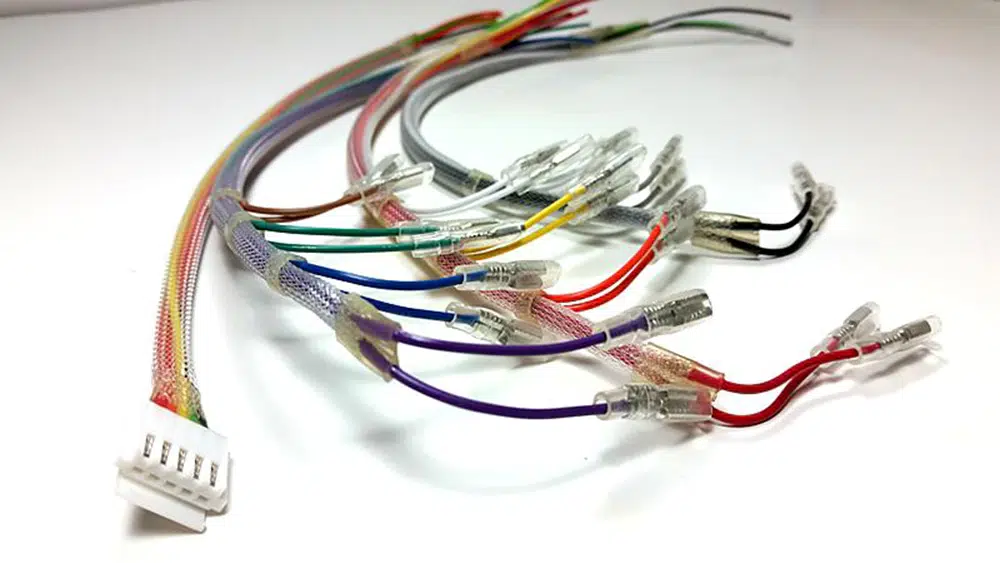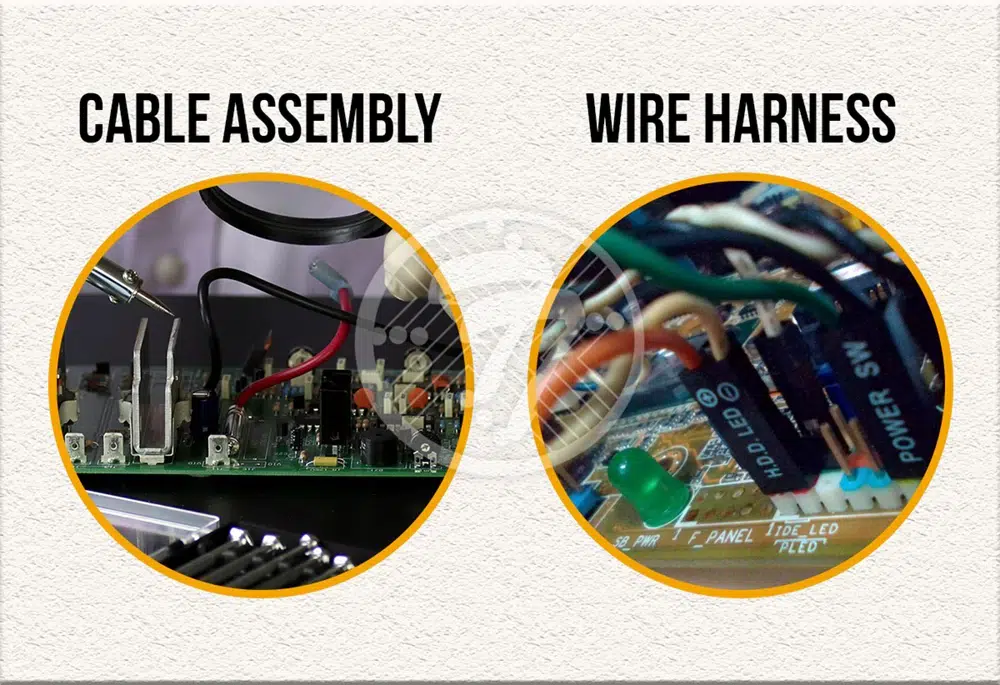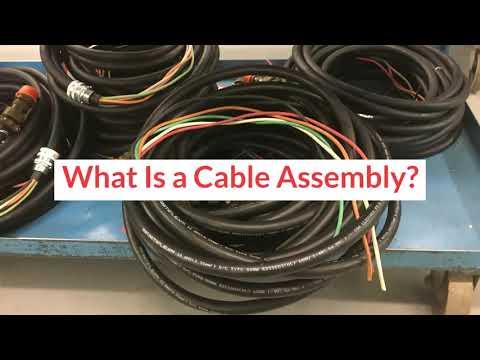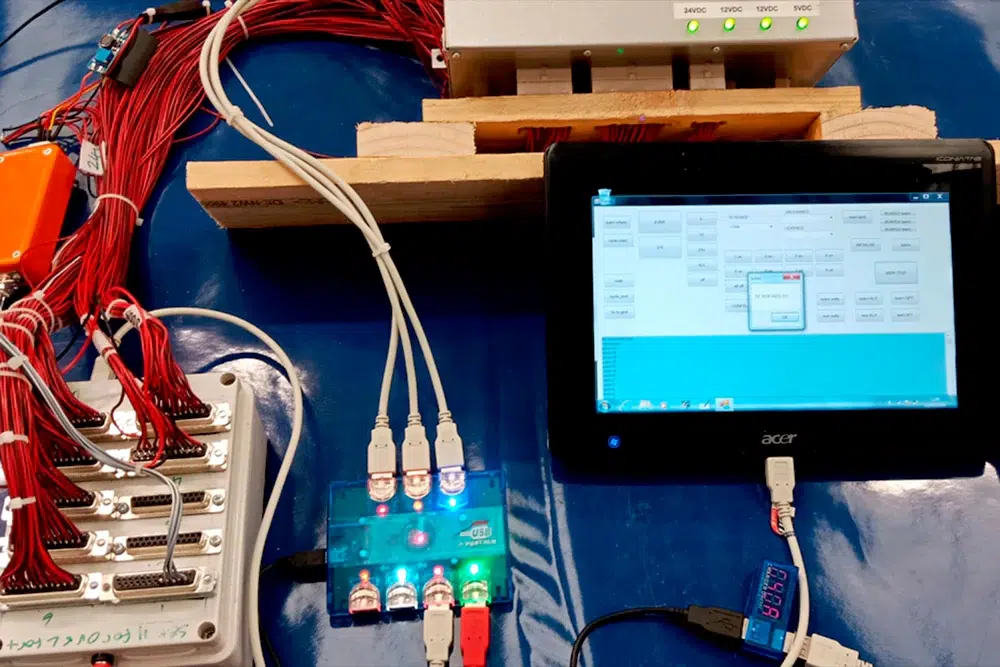From connecting home entertainment systems to enabling complex networks that power global communications, cable assembly plays a critical yet often overlooked role in countless technologies we use every day.
Anywhere electronic signals or power needs to get from point A to point B, you’ll find a specially engineered system of bundled cables and connectors—commonly called a cable assembly—making it all possible behind the scenes.
As vital components that facilitate the movement of data and electricity, understanding cable assemblies can shed light on how many technologies function to quickly transfer information that shapes our digital world.
This article covers the key questions surrounding cable assemblies including applications, main parts, types of cabling, testing methods and how custom assemblies are manufactured.
What are Cable Assemblies and What Do They Do?

A cable assembly is a group of cables combined to connect electronic or electrical components together to transfer power or data signals. Cable assemblies, also known as wire harnesses, provide interconnections for components in complex electrical systems and equipment.
What Does a Cable Assembler Do?
A cable assembler is responsible for manually or mechanically joining various cables and wires together to produce cable assemblies according to specifications.
Their duties include cutting wires and cables to length, stripping insulation, soldering wires, crimping terminals and connectors, heat sealing, taping, labeling, testing, and inspecting finished wire harnesses.
What is the Difference Between Cable Assembly and Wire Harness?

The terminology for cable assembly and wire harness is often used interchangeably, but there are some distinct differences:
Location: Cable assemblies provide connections between separate electrical systems or pieces of external equipment, with exposed cabling running between. Wire harnesses integrate internal components within an enclosed housing, chassis, or control cabinet, bundling cabling connecting PCBs, switches and other enclosed hardware elements.
Termination: Cable assemblies have connectors affixed on both ends to plug into and interface with external devices. Wire harness cabling terminates at internal system elements via crimped pins, solder joints or screw terminals.
Environment: Exposed cables and connectors along the length of a cable assembly provide connection points across different equipment, meaning they must withstand the application environment. Harness segments predominantly reside within an enclosure protected from harsh ambiance.
Exposure: Cable assemblies generally have long exposed runs that must maintain shielding and protection. Harnesses have short cabling spans from component to component within an enclosure not subject to environmental wear.
In essence, where cable assemblies tie external equipment environments together, wire harnesses enable connectivity for electronics and parts sharing a common enclosure. This fundamental separation helps delineate true cable assemblies from internal wiring harnesses.

What is the Basic Components of a Cable Assembly?
The basic components of a cable assembly include:
• Cables: The wires or groups of wires that transmit power and signals. Common options are copper wire, fiber optic cable, and coaxial cable.
• Connectors: Devices on the ends that allow the cable to interface with equipment. Connector types include USB, HDMI, D-sub, circular, and more.
• Strain reliefs: Prevent cable damage from bending or pulling forces. Can be simple plastic sleeves or more heavy-duty devices.
• Shielding: Braided mesh or foil wraps to protect the cable from electromagnetic interference.
• Jacketing: Outer plastic sheeting that bundles and protects internal components.
What is a Coaxial Cable Assembly?
A coaxial cable assembly uses coaxial cable to carry high frequency electrical signals. It has a central copper conductor surrounded by a ground shield and insulation which allows it to transmit signals with less noise and losses.
Common applications include connecting antennas or CCTV cameras to transmitters and receivers. Connectors are attached on both ends, like BNC or F-type.
What is a Fiber Optic Cable Assembly?
A fiber optic cable assembly transports data as light pulses along glass or plastic fibers.
Fiber assemblies provide very high bandwidth spanning long distances with immunity to electromagnetic interference compared to metal cables.
Connectors such as LC, SC and ST couple the cable to network equipment. Fiber assemblies are essential for high speed telecom and data center applications.
How do You Test a Cable Assembly?

Verifying the reliability and performance of cable assemblies involves standardized test methods before deployment:
Continuity Testing: Using a multimeter, continuity tests electrically check each wire end-to-end to ensure proper connections with no opens or shorts which could disrupt signals.
Insulation Testing: An insulation resistance meter detects damage, wear, or flaws in the insulation that could allow current leakage or short-circuiting to occur. Tests are conducted before assembly and after to validate insulation integrity.
Pull Testing: Tension is applied to cables and connectors while monitoring functionality to simulate installation stress and ensure durable construction that will withstand bending or pulling forces during use without deterioration to connections.
Signal Transmission Tests: Relevant signal types such as high-speed data, radio frequency, and network packets are transmitted while monitoring cable assembly operation to verify all cabling consistently and accurately propagates signals from source to destination without distortion or significant loss.
Environmental Testing: Cable assemblies undergo testing via mechanical vibration, twisting and bending, as well as exposure to temperature extremes, fluids, and other environmental factors likely in the service environment to validate robust, consistent functionality under abusive simulated real-world conditions.
Each test provides quality assurance checks to catch flaws early and guarantee cable harness reliability over the product’s lifetime. Rigorous testing across stress factors by manufacturers ultimately prevents field failures.
How to Find a Cable Assembly Manufacturer?
Those looking to buy custom cable assemblies can search online directories and use geographic filters to find manufacturers nearby that offer engineering expertise as well as in-house design, production, and testing capabilities. The closer the better for ease of collaboration and communication to ensure the cable assemblies are made to meet required mechanical, electrical and signal specifications.
Conclusion
Cable assembly powers connectivity in an extensive range of electronics and equipment through specialized cables, connectors and components tailored for the expected signals, environmental factors, and system interfaces.
Custom-engineered cable assembly is essential for robust product performance and reliability. By determining application requirements early when selecting a manufacturer, the cable harness can be optimally designed to withstand mechanical stresses, match impedances, minimize noise, and fully validate signal integrity.
Understanding cable harnesses provides key insights into enabling timely, efficient data flows underlying the inner workings of high-speed communication networks and devices that are the foundation of innovation worldwide.
A cable assembly is a group of cables combined to connect electronic or electrical components together to transfer power or data signals.
A cable assembler is responsible for manually or mechanically joining various cables and wires together to produce cable assemblies according to specifications.
A coaxial cable assembly uses coaxial cable to carry high-frequency electrical signals. It has a central copper conductor surrounded by a ground shield and insulation which allows it to transmit signals with less noise and losses.










